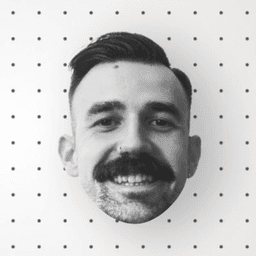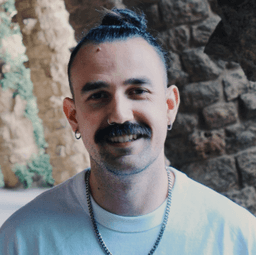Bootstrapping a $6,500 MRR SaaS Portfolio: Jim Raptis’s Journey


Business Description
Table of Contents
Navigate through the case study sections
Executive Summary
Case Study Content
Building Code Skills Outside the Classroom
At 18, Jim was stuck in theory-heavy engineering courses that never touched a keyboard. Frustrated, he turned to YouTube tutorials, Stack Overflow threads, and GitHub examples. He learned by doing: adding user logins, testing features, and shipping tiny tools. His first app converted units of measurement, but more than the product itself, he discovered the thrill of making something real.
The VC-Funded Startup and Its Lessons
With three friends, Jim pitched a startup idea at contests and landed €300,000 from Greek investors for 20% of the company. Targets were set every quarter, regardless of actual revenue. When growth didn’t match investor expectations, they sold the business and split the proceeds. After repaying investors, Jim was left with just enough to fund a few months of living costs, and a hard lesson about control and outside pressure.
Pivoting to Solo Tools and Quick Sales
With limited runway, Jim built free design and coding utilities and launched on Product Hunt. A buyer snapped up three projects, Wireframer, DesignValley, and CopyPalette, for $5,000. The cash injection bought time and confidence. More importantly, it proved that small, focused products could find real buyers on their own.
Creating a Suite of Bootstrapped Products
Jim’s first full-fledged product, MagicPattern, began as a quick experiment to recreate a Shopify graphic effect in code. Designers loved it, and passive income followed fast. Next came BrandBird, an editor for software makers, and SuperMotion, a one-time-sale tool to turn images into videos. Today, the three tools pull in $6,500 in MRR, with group pricing options and lifetime deals to kickstart adoption.
Juggling Multiple Tools Without Burning Out
Rather than fixate on a single product, Jim keeps his day varied by switching between projects. He blocks time for urgent bug fixes, then dedicates a week to new features on one tool. The result: steady progress without monotony. He fields only a few customer tickets per week, freeing him to prototype fresh ideas.
Strategies for Steady Growth
- Building in public on Twitter to turn followers into testers and buyers.
- Product Hunt launches paired with social buzz and community support.
- SEO focus on speed, UX, and useful content that drives organic traffic.
- Product-led marketing tactics, like watermarks that encourage sharing.
- Limited lifetime deals to fuel early feedback and revenue.
Key Lessons Learned
- Hands-on coding trumps endless theory when you’re building digital products.
- Small launches can pay your bills and validate ideas without outside funding.
- Multi-product portfolios keep motivation high and diversify income.
- Early adopters love one-time deals and can become your biggest advocates.
- Profitability from day one means you call the shots, not investors.
What’s Next?
Jim plans to push new features, refine his SEO content, and explore partnerships to boost distribution. He remains committed to lean practices and simple pricing models. His journey shows there’s no single path to success: sometimes staying small and in control delivers the best results for both creator and customer.
Key Takeaways
- 1Prioritize hands-on coding practice over theory to learn building real software faster and more effectively.
- 2Small, focused launches on platforms like Product Hunt can generate immediate revenue and valuable user feedback.
- 3Diversifying between multiple bootstrapped products keeps your work varied and income streams stable.
- 4Building in public on social channels helps convert your network into active testers and paying customers.
- 5Offering limited lifetime deals is a powerful tactic to attract early adopters and fund further development.
- 6Keeping overhead low and aiming for profitability from day one lets you control the roadmap without investor pressure.
Key Facts
Tools & Technologies Used
Premium Content Locked
Subscribe to access the tools and technologies used in this case study.
Unlock NowHow to Replicate This Success
Premium Content Locked
Subscribe to access the step-by-step replication guide for this case study.
Unlock NowInterested in Being Featured?
Share your success story with our community of entrepreneurs.
Explore More Case Studies
Discover other inspiring business success stories

How Eddie Eastman Built a 6-Figure Business Selling Ready-Made Online Stores
Eddie Eastman wasn't always a tech founder, he started as a survivalist, but pivoted to building and selling digital Sho...
Startup Streams

From $100K Inventory Lockdown to a $1M Amazon Exit
Marwan Barakat turned a simple baby sunglasses brand into a seven-figure Amazon success story. Facing a patent ban on ha...
Baby Sunnies

How Sublaunch Turned Telegram Channels into a $36K/Month Engine
Sublaunch is a subscription-paywall tool for Telegram that founder Julien Levallois launched via cold DMs, hit $1M in cr...
Sublaunch